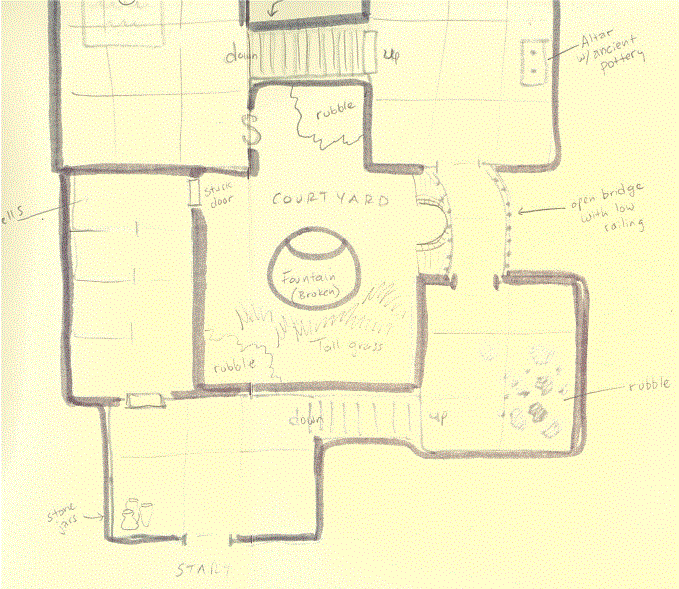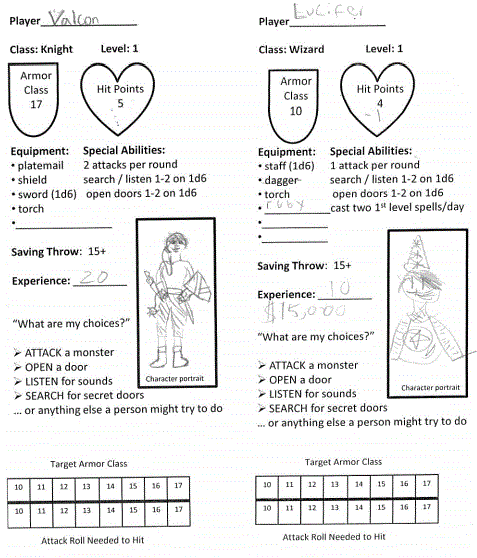Is it possible to get an entire class full of middle school students introduced to tabletop role-playing at the same time?
I realized that the trick would be to produce cadet GMs [Game Masters] who could maintain the excitement and action while still allowing for players to be arranged in small groups.
This time my approach would focus on giving my would-be referees the tools to lead the activity of role-playing. I scrambled madly the night before and part of that morning to get materials together. Then, at the start of class I pulled five of my most precocious map-makers together into a huddle.
"Okay, you guys are going to lead groups of three or four kids through a dungeon today, just like you've seen me referee ..."
Each fledgling GM was given the following:
1. A GM map of a five-room dungeon, sketched on the inside of a manila folder.
I divided rooms and halls into areas in case they wanted to use the movement rules from Dagger for Kids. More importantly, I made notes in pencil next to many rooms ("pool of murky water" or "mass of roots grow through a crack in the wall"). This completely eliminated the need for paragraphs of text to be read beforehand and rescued my neophytes from becoming slaves to boxed text.
 |
| sample folder map |
2. A stack of half-index cards (3"x2.5").
Each had a picture of a monster on it. I advised them to select 3-6 cards and pick locations for those creatures. I suggested that when a monster was encountered, they could describe the creature, lay out the card, or both; whatever they preferred. None of the monster cards were marked with names, stats, or any other info; just a picture of the creature.
3. An index card listing stats for each type of monster and several treasures
Example: Carnivorous Ape: move 4, AC 13, Hit points 14, bite 1d6, 50 xp.
Example: Jade necklace: uses 1 equipment space, 1d20 x 20 xp.
I advised the GMs to pick locations for two of the treasures and I reminded them that treasure only grants experience points to the character who successfully carries it out of the dungeon.
4. A sheet of white paper for sketching maps or making notes.
5. Two copies of Dagger for Kids in case a rules question came up.
| a fine introductory tool! |
6. A half-dozen character sheets.
 |
| Here are a knight and a wizard! |
7. Two 20-siders and two 6-siders.
I pulled my six Bawal Bayan explorers aside and then divided the remaining eighteen students among my five newbie GMs.
"Look over your maps. Decide where the monsters and treasure should go while your players choose what character class they want to play. Then get started as soon as you are ready. I'll be running a session at this table over here in case you need help ..."
Next Time: How We Rolled


No comments:
Post a Comment